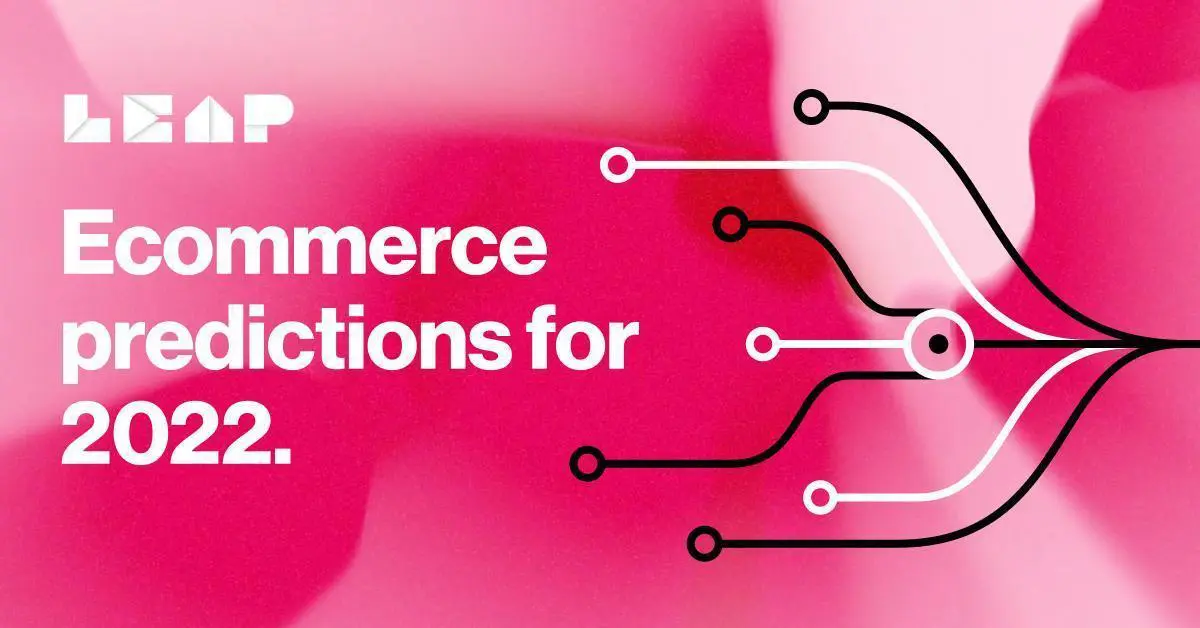Ecommerce predictions for 2022.

If retailers and ecommerce companies have learned anything in the past two years, it’s that they can no longer rely on the pre-pandemic ways of doing business. Volatility with supply chains and inflation have forced retailers to keep evolving. Here’s a look at our retail and ecommerce predictions for 2022.
Retailers will continue to strive towards 1-to-1 ecommerce personalization.
When it comes to retail and ecommerce predictions for next year, one thing is obvious: businesses must continue inching towards 1-to-1 personalization. This means delivering personalized shopping recommendations for each shopper.
To achieve this brands need to continue aggregating and utilizing first-party customer data. They will need to get better at micro segmentation, which means understanding what different customers want based on their age, geographic location, and other important factors.
Testing and optimization will become even more important as retailers strive towards true 1-to-1 personalization, especially as brands contend with younger shoppers with no brand loyalty.
Finding new ways to collect consumer data responsibly will be key.
After Google announced that the tech giant would stop tracking third-party cookies, it became clear that brands needed to start getting to know their customers without information from tech giants.
For retail and ecommerce companies, the future will involve collecting data about customers through gamification and shopping profiles. People are opting for more privacy, so retailers should find ways to personalize their offerings without compromising consumers’ personal data.
More retailers will continue to offer quizzes and gather personal information tied to hobbies, interests, and aesthetics.
Secondhand ecommerce will continue to boom.
We’re in year 2 of having supply chain issues. Inflation continues to drive clothing prices up. It’s safe to say that these issues are never really going away.
Concerns about sustainability have led to a boom in secondhand retail and ecommerce companies, such as The RealReal, Poshmark, and thredUp. I predict we will continue to see this space expand as well.
For so long, American shoppers focused on fast fashion, which meant buying more products at a faster frequency. Eventually, US consumers will need to start acting more like Europeans and work towards owning fewer, nicer things.
On top of that, people are also re-examining what they want to wear and how they want to present themselves after nearly 2 years into the pandemic.
Customers are shopping more sporadically, with smaller cart sizes.
The supply chain crunch has forced consumers to pick and choose what they’re purchasing from multiple retailers.
When making our ecommerce predictions, we also consulted our own data from the Holiday Benchmark series. 76 percent of survey customers said they prefer to shop more sporadically, while data from the Quantum Metric platform shows that average order values dropped 35 percent between August and October, 2021.
Smaller order sizes could lead to spikes in shipping costs, especially for retailers dedicated to offering free shipping. Retailers might need to raise their spending limits for free shipping, or provide additional shipping options for consumers who don’t mind waiting an extra few days in order to save.
Ecommerce customers are using shopping carts to create fantasy wish lists.
People will continue interacting with a brand’s website and mobile app multiple times before making a purchase.
Abandoned cart rates have increased, but that doesn’t necessarily mean customers are frustrated with the user experience. In fact, I predict that customers will continue using carts to keep track of the items they’re looking to purchase, which means ecommerce conversion rates might continue to stay low.
If brands are not mobile first, they are already behind.
If you’re not operating in a mobile-first environment, you are already behind the times.
All of the data and trends are pointing to the ecommerce and retail space becoming mobile first. Today’s shoppers want to browse items and make purchases directly from their phones, whether they are at home watching TV or on the go.
No more digital frustration.
All consumers, and especially digital natives, are not going to put up with any types of frustration, such as broken links, technical glitches, and broken buttons. Today’s online shoppers have no patience for even the small flaws.
According to data from our Holiday Benchmark Series, frustration rates are higher for mobile than desktop devices. This suggests that brands need to double down on improving the mobile experience.
People will choose brands that align with their values.
Shoppers, and especially Gen Z shoppers, are voting with their money. They want to support brands that align with their values. Mission-driven brands with commitments to social issues like sustainability will win out. Brands should stick behind what they believe in, and customers will follow.
Consumers are also looking for transparency, which means knowing which country and factory produced their products. Is the brand’s clothing living up to organic and ethical standards?
With so many boxes being mailed out everyday, retailers will also need to think about how to reduce waste, such as offering the option to ship packages in fewer boxes.
We predict that the ecommerce returns process will improve.
If there’s one area that continues to frustrate online shoppers, it’s returns.
We can all agree that the return process can be a nightmare, especially when brands don’t clearly communicate their return policies. Can you drop the item off in a store, or do you need to ship it back yourself?
As the ecommerce space continues to evolve in 2022 and beyond, retailers will need to offer super flexible returns policies, with more options and ease.
Interested to learn more about other ecommerce predictions? Join our discussion about the changing retail landscape at our annual virtual conference Quantum LEAP on Feb 8-9, 2022.







